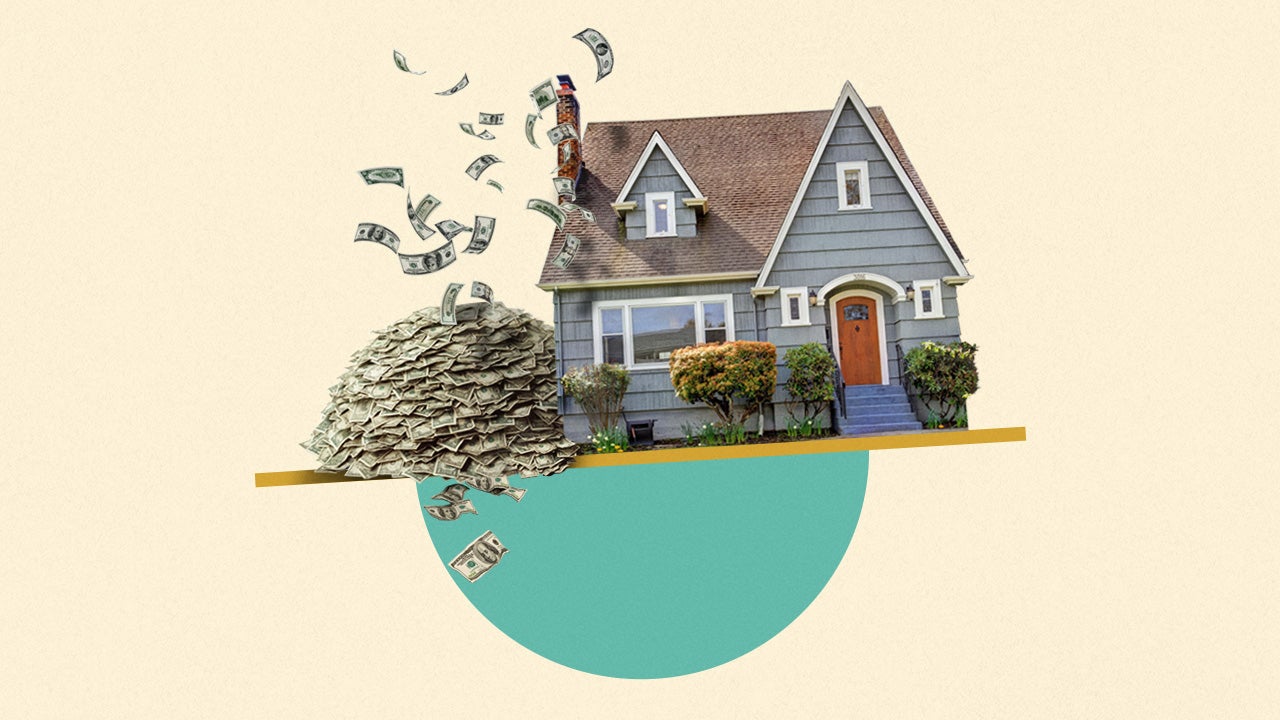Fixed-rate vs. adjustable-rate mortgages: What’s the difference?




Key takeaways
- With a fixed-rate mortgage, the rate literally remains fixed: It carries the same interest rate and monthly payment for the entire life of the loan.
- But an adjustable-rate mortgage (ARM) has an interest rate that changes at preset intervals, increasing or decreasing the monthly payment each time.
- The introductory interest rate on an ARM is usually lower than the rate on a fixed-rate mortgage, but it can change significantly after the introductory period.
Fixed-rate vs. adjustable-rate mortgages
Fixed-rate mortgages are the go-to for most borrowers, despite adjustable-rate mortgages (ARMs) charging a lower interest rate to start. Here’s a bit about how each option works, plus an example.
How do fixed-rate mortgages work?
A fixed-rate mortgage (sometimes abbreviated to FRM) maintains the same interest rate for the life of the loan, so your monthly mortgage payment — the principal and interest portion, anyway — won’t change unless you refinance.
Keep in mind: Your total monthly mortgage payments can still change as homeowners insurance premiums or property tax rates rise. The portion of your monthly payment that goes to loan principal and interest, however, won’t change with a fixed-rate mortgage.
Fixed-rate mortgages are more popular than ARMs. They typically come in 30-year and 15-year terms, but there are also flexible term options anywhere from eight years to 29 years.
How do ARMs work?
An adjustable-rate mortgage has an interest rate that changes at predetermined intervals after a fixed-rate introductory period, typically three, five, seven or 10 years. Generally, this initial fixed rate is lower than that of a standard fixed-rate mortgage.
But once the introductory term ends, your rate will adjust up or down, usually every six months or every year. These adjustments are often tied to a financial index, such as the Secured Overnight Financing Rate (SOFR). Most ARMs have caps that limit how much your rate can increase.
Example of fixed-rate vs. ARM payments
Here’s an example of the difference in monthly payment between a fixed-rate mortgage and an ARM. In this scenario, we assumed a first adjustment of 1.5 percent, subsequent adjustments of 1.5 percent and a lifetime rate cap of 5 percent. We also excluded homeowners insurance and property taxes. Our ARM vs. fixed-rate calculator can help you compare your own payment scenarios.
| 5/1 ARM (30 years) | FRM (30 years) | |
|---|---|---|
| Home price | $390,000 | $390,000 |
| Loan amount | $370,500 (5% down) | $378,300 (3% down) |
| Initial interest rate | 6.11% | 6.89% |
| Initial mortgage payment | $2,248 | $2,489 |
| Maximum mortgage payment | $3,376 | $2,489 |
Differences between fixed- and adjustable-rate mortgages
The biggest difference between these two options is the variability of the interest rate: With a fixed-rate mortgage, the rate stays constant for the entire loan term, while an ARM rate changes over time. If your rate goes up, your monthly payment will also increase, and vice versa. This can make ARMs tricky to budget for in the long term.
Beyond the rate structure, other differences between a fixed-rate mortgage and an ARM include:
- Initial interest rate: An ARM typically has a lower initial interest rate and monthly payment than a fixed-rate loan.
- Down payment minimum: A conventional ARM requires a higher minimum down payment of 5 percent, compared to 3 percent on conventional fixed-rate loans.
- Interest calculation: With a fixed-rate mortgage, your rate is set at the start of the loan. With an ARM, your rate is recalculated with every adjustment, based on the index associated with the ARM, the lender’s margin and caps.
Similarities between fixed- and adjustable-rate mortgages
Fixed-rate mortgages and ARMs do have some aspects in common, though:
- 30-year standard term: Both types come with a standard 30-year repayment term (though other options are available).
- Credit requirements: Both require good-to-excellent credit to qualify for the most favorable rates and terms.
- Refinance potential: Both offer borrowers the option to refinance.
Which one is right for you?
Fixed-rate and adjustable-rate mortgages both have their pros and cons. Still, one type of loan might be a better fit than the other depending on your financial circumstances.
Fixed-rate mortgages might be best for:
- Those planning to stay put: If you plan for this to be your forever home, the stability of a fixed-rate mortgage might be the best option. You won’t ever need to worry about increases to your monthly principal and interest payment, and you’ll have the option to refinance in the future if rates come down.
- Those buying their first home: Buying a house is a complicated process, and the nuances of an ARM can make it even more daunting. In addition, many first-time homebuyer loan programs only come with a fixed-rate option.
- Those borrowing while rates are low: If borrowing costs are relatively cheap when you’re applying for your home loan, it makes sense to lock in that low fixed rate.
- Those making lower down payments: Conventional fixed-rate loans only require a minimum of 3 percent down, while ARMs require 5 percent. If your savings are low or you’re tight on cash, a fixed-rate loan might be more manageable.
ARMs might be best for:
- Those planning to move soon: If you don’t plan to stick around for longer than a few years, you could save money with the low introductory payments on an ARM and sell before the rate resets.
- Those who anticipate increased income: If you expect a financial windfall or a major rise in income over time, you might be better equipped to afford potential rate increases.
- Those borrowing while rates are higher or more volatile: An ARM might be a more enticing option when prevailing market rates are higher or their movement is especially uncertain.
- Those taking out a jumbo loan: Borrowing more money means paying more in interest over time. An ARM could help you save on this cost, at least initially.
FAQs
Why we ask for feedback Your feedback helps us improve our content and services. It takes less than a minute to complete.
Your responses are anonymous and will only be used for improving our website.




